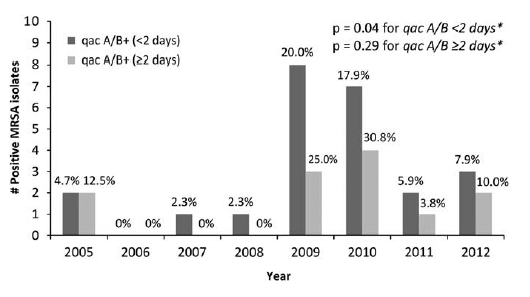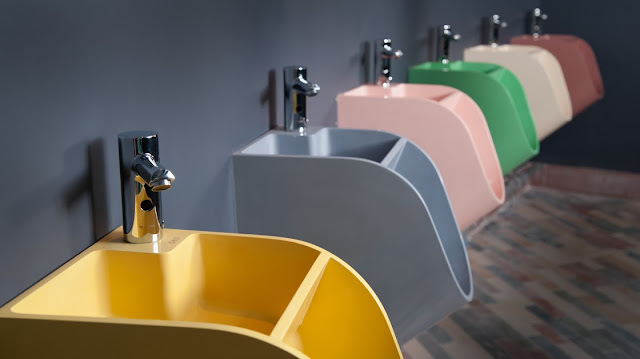Preventing Norovirus Transmission in Your Home
Several weeks ago, my son came down with norovirus. There has been a lot of norovirus this year in Iowa, the US and the world. One of the reasons is that there's a new variant of genotype II.4, named Sydney 2012, that was reported through CDCs CaliciNet to be causing 58% of outbreaks in December 2012. So it's likely that none of us are immune to this variant, meaning that the three others in my family were now at high risk of becoming ill with norovirus. To make matters worse, we were about to celebrate my daughter's birthday and I didn't want her to become ill on such an important day. So my wife and I, educated by previous norovirus outbreaks in the family (2005 and 2010), hatched a plan to beat the virus this time. Let me foreshadow a bit, none of us got sick. Let me tell you how we did it.
The enemy
Noroviruses has a very low infectious dose (≥18 viral particles) and infected patients shed 5 billion infectious doses in each gram of feces. The virus is environmentally stable, can survive up to two weeks on surfaces and is resistant to many common disinfectants. Alcohol hand rub, is thought to be a suboptimal form of hand disinfection with soap and water being preferred. The virus is transmitted fecal-orally and is aerosolized, meaning it spreads widely in the environment. Recent evidence even suggests that commercial dishwashers are ineffective in cleaning norovirus off of dishes and silverware. Finally, since 51% of cases caused by Sydney 2012 were caused by human to human transmission, household transmission is a big mechanisms of spread.
Caveats, Limitations and Yes I Know, but Humor Me
Now, as many of you know, I'm an ID physician and epidemiologist and I like to identify limitations in almost anything I read. So, I'll save you some of the trouble and point out the weaknesses in this case report. First, it's a case report. Second, we never tested for norovirus in clinical or environmental specimens. Third, we don't know if we were susceptible to this strain, however unlikely that would be.
Case Report
Our kindergarten-aged son, first expressed norovirus symptoms when strapped into his booster seat in the back seat of our car. The other three of us were in the car at the time. We drove home and he was sick 3-4 more times in the bathroom. We quickly changed his clothes and quarantined him to a bathroom with a TV to watch for the next 24 hours. We then cleaned up the car and hatched a plan to beat back in-house transmission.
The plan
1) We began practicing strict hand hygiene with soap and water. We rarely used alcohol hand rub, if at all.
2) We realized that all dishes in the dishwasher from the morning he became ill were potentially contaminated and double washed them in the dishwasher. We also removed those dishes from circulation for ~7 days.
3) We each began using a unique set of dishes. We each had our own glass, bowl, dish and utensils. We each rinsed and washed those individually so that we couldn't transmit virus to each other. At the time, we didn't know if others were contagious or not.
4) We didn't wash the booster seat, clothes, towels etc that were overtly or potentially contaminated for ~2 weeks; we just kept them in a bag in the corner of the basement.
5) Finally, we were lucky that we have two bathrooms in the house. One was our son's bathroom for one week and the other was for the three "uninfected" family members.
That's it. Most of these steps are easily reproducible in any household. I completely understand that the availability of a second toilet could have made a big difference and not everyone has one available. Although in 2010, we also had a second toilet available and it didn't make a difference since all got sick. Finally, the big change to our infection control in 2013 versus 2010 or 2005 was that we all had our own utensils, glasses and dishes. I suspect that made the difference this time and is probably worth future study. It would be hard to do a randomized trial of such an intervention (which is why I wrote up this case report), but it could be done.
So good luck out there. Be safe. You never know when norovirus will strike, but don't think you can't beat back this virus. You just gotta use your head, soap and water and your own spoon. Oh, and I know I've now totally jinxed myself. I'll be OK. I'm keeping a bucket next the bed.
reference: Hall AJ, J Infect Dis 2012




This is similar to my families experience earlier this year. My wife came down with what we believe was norovirus. We have a master bedroom with an attached bath, and my wife was immediately quarantined to that area for 24 hrs (I moved to the couch), and my 2.5 yr old son informed that it was "dirty" and to stay out. We also had a main bathroom that my son and I used.
ReplyDeleteWe all washed our hands frequently (mine actually became raw with all the hand-washing), and washed down the wifes bathroom with a bleach solution twice a day for 2 days, and all clothing that came out of our bedroom was washed with a dilute bleach solution (some clothes did get lightened from this, but I think it was worth it).
After the 3rd day, we were pretty sure I and my son did not get it from my wife, and were very thankful.
I will definitely consider the "own dishes" if it ever strikes us again.
thanks for the such as wonderful article
ReplyDelete